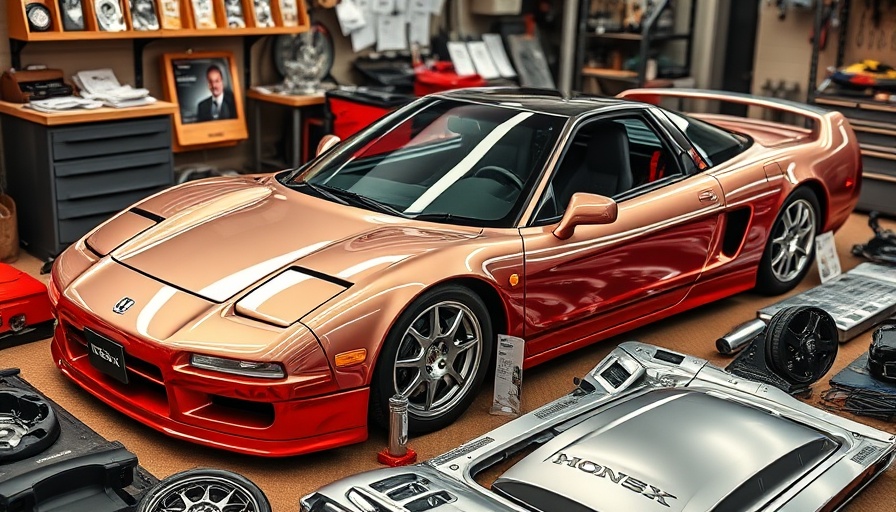
The Exciting Revival of New Parts for the Legendary NSX
The Honda NSX, a beloved icon in the automotive world, is known for its performance and design. Starting next year, Honda will offer new replacement parts directly for the NSX, allowing owners to keep their vehicles in pristine condition. This move not only honors the NSX's legacy but also reassures drivers that they won’t need to search far and wide for parts that might be obsolete or hard to locate.
Why Are Replacement Parts Important?
Replacement parts are crucial for maintaining any vehicle, especially high-performance models like the NSX. Over the years, certain components can wear down, leading to diminished performance, aesthetic issues, or safety hazards. By providing direct access to new parts, Honda is making it easier for NSX owners to restore functionality without compromising on the vehicle's integrity and value.
Enhancing the NSX Ownership Experience
The decision by Honda to supply new parts speaks volumes about their commitment to customer satisfaction and vehicle longevity. NSX owners, often passionate about their cars, want to ensure that their investment is protected. Having access to OEM (original equipment manufacturer) parts allows for easier repairs and modifications, ensuring that the car performs as intended on both the road and the racetrack.
Historical Context: The NSX's Legacy in Sports Cars
The NSX was first introduced in the early 1990s, hailed as one of the first supercars produced outside of Europe. The blend of performance, reliability, and everyday usability set a new precedent in the sports car category. This legacy has made the NSX a desirable model among enthusiasts, which is why Honda's decision to provide new parts is a significant step towards honoring its historical importance.
A Bright Future for Classic Cars
Honda’s commitment to creating new parts for the NSX suggests a trend in the automotive industry towards sustainability and preservation. Instead of letting older models fade into obscurity, manufacturers are recognizing the value of classic vehicles and their owner communities. This could lead to similar initiatives across other brands, making it easier for enthusiasts to maintain their vehicles for generations to come.
Common Misconceptions About Classic Car Maintenance
Many people assume that maintaining a classic sports car is prohibitively expensive or difficult. However, with accessible, high-quality replacement parts becoming more common, maintaining these vehicles is far more manageable. Additionally, resources and support available to car owners mean there are now more options than ever for DIY repairs and expert assistance.
Actionable Insights for NSX Owners
As Honda prepares to roll out new parts, NSX owners should take the opportunity to assess their vehicles and consider any necessary maintenance or upgrades. Staying proactive can enhance the car's performance and lifespan. Furthermore, by participating in community events or forums, owners can share experiences and tips on getting the most out of their NSXs.
Join the Conversation
The automotive community thrives on shared knowledge and experiences. If you're an NSX owner or an automotive enthusiast, consider engaging with forums or social media groups to share insights about your favorite modifications or maintenance strategies. As part of this growing community, you can stay informed about parts availability, DIY tips, and stories from fellow enthusiasts navigating the joys of their own NSXs.
 Add Row
Add Row  Add
Add 




Write A Comment